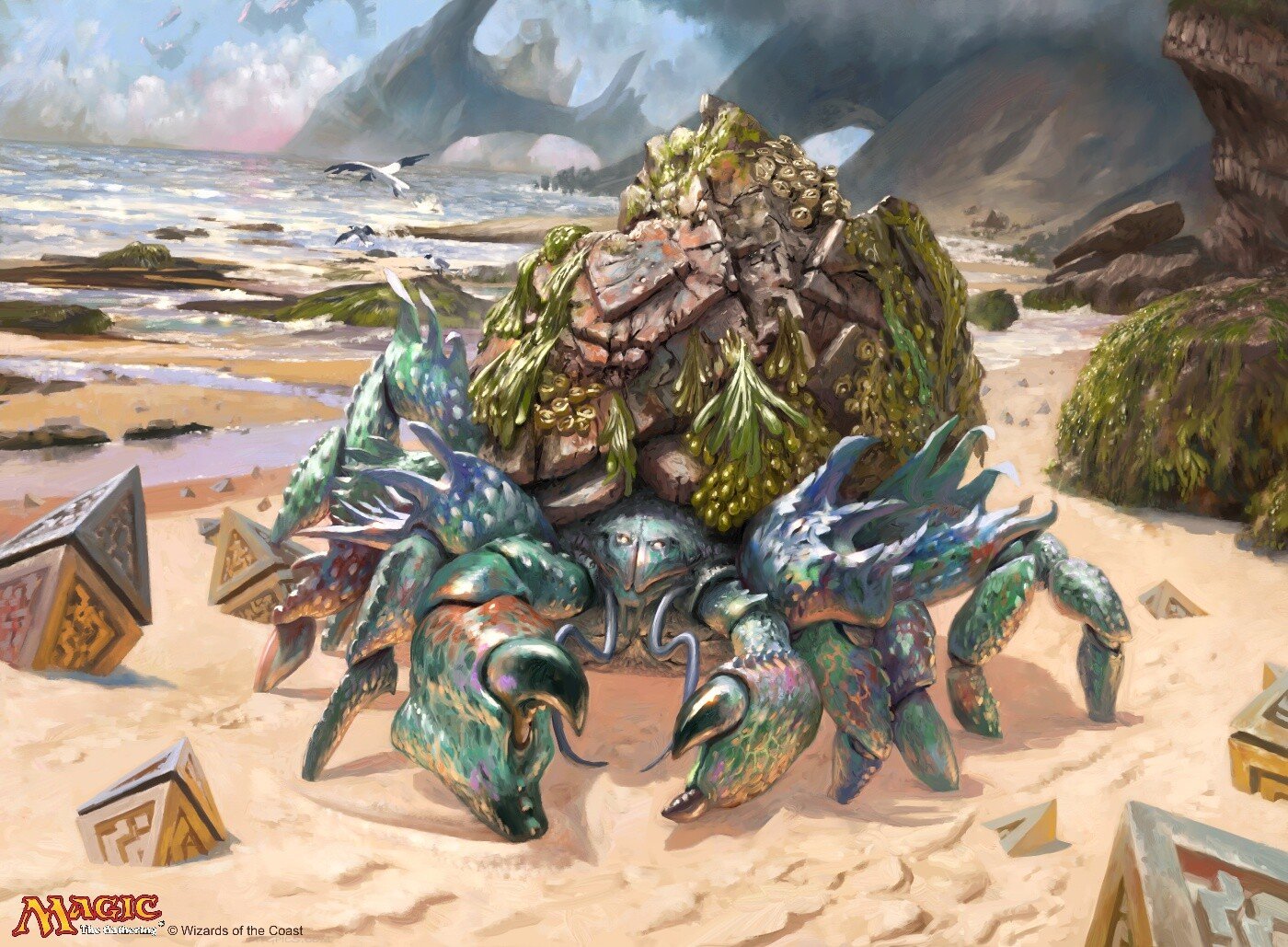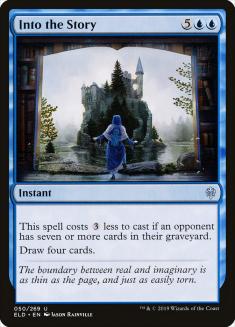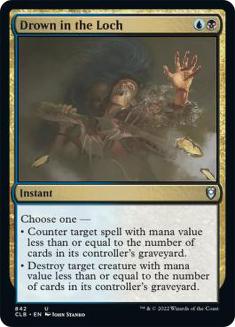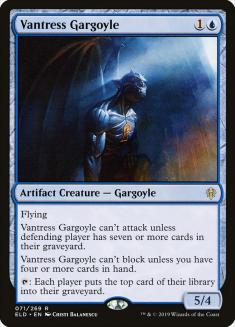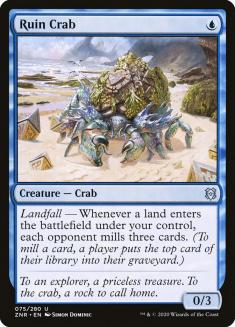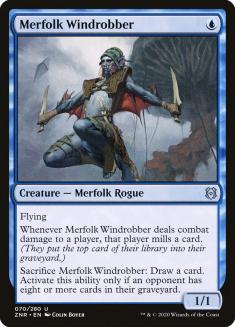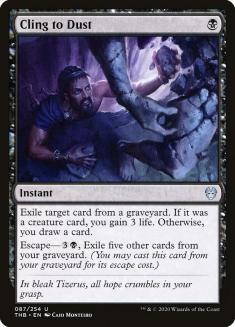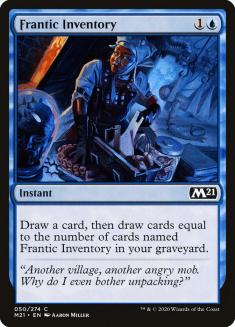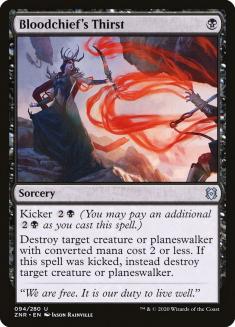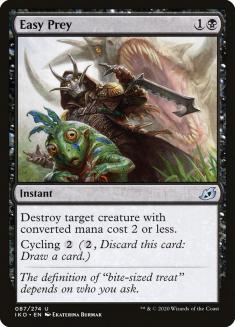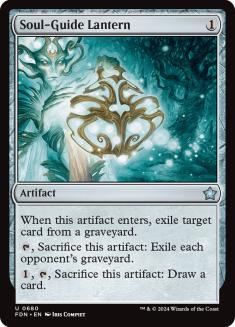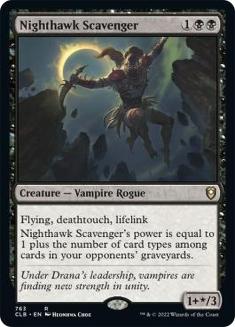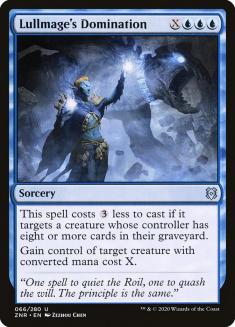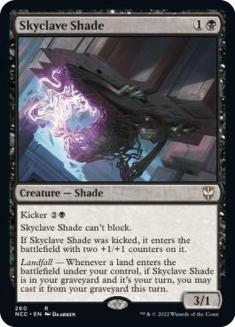In my latest article, I mentioned that I thought Dimir Rogues should move to a more control-oriented build, that the real stars of the deck were Into the Story and Drown in the Loch, and that the Rogues were mostly milling enablers and not payoffs. I then suggested a list that cut down on the Rogues in return for some more removal and counterspells, and that played a playset of Vantress Gargoyles.
Fast forward to the 2020 Season Grand Finals and the only Dimir Rogues deck to show up seems to not only agree with what I said but take it even further. Seth Manfield’s deck had a mere eight Rogues, four Vantress Gargoyles, and access to Lurrus of the Dream-Den. Seth cruised to the Top 8 of the tournament but ultimately fell flat to a barrage of Lucky Clover decks, which are impossible for a Dimir deck to remove once on the battlefield.
Creatures (12)
Lands (21)
Spells (27)

Had the format stayed the same, things would have been a bit dire for Dimir Rogues. I think Four-Color Ramp was a very reasonable matchup, but Adventures was unfavorable because a resolved Lucky Clover was a card that came down early enough that it dodged counterspells and that, once on the battlefield, could not be removed. The combination of Bonecrusher Giants and Brazen Borrowers made it hard to race them – as well as Omnath, Locus of Creation – and then Lucky Clover and Edgewall Innkeeper provided enough advantage that they were hard to grind. The matchup wasn’t hopeless by any means, but it wasn’t favored.
Now, with the Lucky Clover, Omnath, and Escape to the Wilds ban, everything changed. Many new decks can flourish on either side of the spectrum, and the bane of Dimir Rogues — a two-mana artifact that provides value for the rest of the game — is finally gone.
If Dimir Rogues was a viable deck before, it ought to be a viable deck now as well, even if we need to make some adjustments to it to reflect the new metagame that is emerging. This is the list I play against the most on ladder, which as far as I know originated from popular streamer crokeyz:
Creatures (16)
Lands (23)
Spells (21)

This list is a bit different from Seth Manfield’s. It doesn’t play nearly as many counterspells and instead opts for maindeck copies of Cling to Dust. It also plays Ruin Crab over Vantress Gargoyle, which is a much better card for milling but obviously worse at both blocking and attacking. Let’s talk about some individual cards:
The biggest difference between Rogue builds is Lurrus or no Lurrus. If you play Lurrus, you can’t play Brazen Borrower; Zareth San, the Trickster; Rankle, Master of Pranks; or Nighthawk Scavenger, which really cuts down on the “Rogues” element of the deck and to an extent forces your build to be less aggressive. In return, you gain a guaranteed way of grinding people out.
Personally, I think Lurrus is worth it. I want to tone down on Rogues anyway, and this deck just has too many good one- and two-mana creatures to return. There’s the downside of hinting to your opponent what deck you’re playing, but at least with Lurrus you could theoretically be playing an aggressive deck, so they might actually misinterpret the information (as opposed to something like a Yorion which by definition will always be a slow deck).
Ruin Crab plays a double role in this list. It can be both enabler and win condition. In my experience, most games do not come down to decking — you can actually kill people fairly quickly with your Rogues — but if you draw multiple Crabs they do threaten to deck the opponent, at which point they are forced to spend resources dealing with the Crabs. Between Lurrus and Agadeem’s Awakening (as well as Call of the Death-Dweller, which I have seen in many lists) you can recur your Crabs a great number of times, at which point they become a viable kill condition as well.
Even if you don’t usually kill with them, however, they are excellent for filling your opponent’s graveyard and powering up the rest of your deck. If you have an early Ruin Crab, it’s trivial to get them to the magical threshold of seven or eight cards. Because of this, I think they have a spot.
Crokeyz doesn’t play Vantress Gargoyle, but I still rather like the card. It’s an enabler and a payoff in one little package, so I don’t fully understand cutting it, especially now that Lucky Clover being gone means people are less likely to maindeck the likes of Gemrazer and Shredded Sails.
You should also not underestimate how much of a benefit Vantress Gargoyle milling you can be. This deck plays both Lurrus and Agadeem’s Awakening and it works quite well with both these cards, as it’s a late-game target that also helps fueling them. It also works well with Cling to Dust if you maindeck that or in post-sideboarded games.
Mostly, I think Vantress Gargoyle is a very important piece against the Rakdos decks, where the best way of winning is racing them (we’ll go over this matchup a bit later). I do think Ruin Crab can have a spot in the deck, but it should be alongside Vantress Gargoyle, not instead of it.
Simply put, I don’t think Merfolk Windrobber belongs in the deck — it’s just too weak. I understand it when you’re using it to enable Zareth San, the Trickster or even Lofty Denial, but if you don’t have access to that, then you’re not getting enough mileage out of it. You’re only milling one card a turn, and if that’s all I’m getting, then I’d rather have Vantress Gargoyle. It does work with your other Rogues, of course, but this is a deck slanted towards control and control decks do not want 1/1s for one.
I think Cling to Dust clearly wasn’t good enough to maindeck before yet clearly is now. The number of graveyard-based strategies is increased –Kroxa, Titan of Death’s Hunger is more common now than it was before – and it’s also a very important card in the mirror, where it can be used to empty out your graveyard and fizzle Zareth San. Sometimes they will mill you enough that it will outpace even Cling to Dust, but exiling six cards is a lot and can turn down all their synergies out of nowhere.
This card is cute with Vantress Gargoyle (and opposing Rogues) but I think the environment is just too hostile to play a two-mana cantrip. Into the Story already fills this role and you’re not that desperate for card drawing. As a cantrip, Cling to Dust is more important right now.
In the previous format, I thought Heartless Act was a better Bloodchief’s Thirst, since being instant-speed was so important for this deck. I no longer think this. The wave of bans has caused an emergence of aggressive decks and many of those involve creatures with +1/+1 counters (such as Luminarch Exarch, Scavenging Ooze, etc.). Heartless Act still has a role, but it’s not as good as it was before.
Instead, a new contender has emerged in Easy Prey. I’m a fan of Easy Prey — it is instant speed, which I like, and now that Omnath isn’t a thing anymore it kills most of the problematic creatures you’re going to face early. Having a number of Easy Preys lets you play more removal than normal because if they’re bad you just cycle them and I value the ability to play a lot of removal.
The one thing is that you do become somewhat weak to Zareth San with this setup, but not every version even plays it nowadays and you always have Drown in the Loch to deal with it (or simply blocking).
Here is the version that I personally like, which is a mix of crokeyz’s and Seth’s:
Creatures (16)
Lands (22)
Spells (22)

All in all, this deck’s play pattern is remarkably similar to a Delver deck’s — you control the game for a bit while chipping in for small amounts of damage and then all of a sudden you turn the corner and attack for a lot. In fact, the cards Thieves’ Guild Enforcer and Vantress Gargoyle are both very similar to the card Delver of Secrets in how they play. It’s hard to acquire total control of the game the way most traditional control decks do, since you only have four counterspells in your entire deck, but you usually don’t need to do that given your ability to kill people very quickly.
The sideboard is very much a work in progress and it’s hard to have a sideboard guide for a format that’s so new, but here’s the general gist of what each card is for:
When Omnath was a thing, I thought Mystical Dispute was even a good maindeck card. Now it’s still quite good versus Dimir Rogues and some control decks, but there are too many nonblue aggro decks for me to maindeck it with a clear conscience. I think that you change up the number of those, as it’s better than Negate against most decks you’d want to bring in Negate against.
Soul-Guide Lantern is good versus both decks that use the graveyard (Rakdos Midrange, Boros Cycling) as well as the mirror, since you can target yourself with it to turn off all their synergies at once. It’s also a cheap permanent to recur with Lurrus, so it works quite well in the deck and is better than an extra Cling to Dust.
Perhaps the most controversial card in the sideboard, since it stops Lurrus from being playable. However, I think that, in the matchups where you want Nighthawk Scavenger (aggressive decks that you have to race), you’re much less interested in the grinding power of Lurrus, and you can often not afford to pay the three extra mana for the bonus card. I’m not absolutely sure that this is the right approach for the anti-aggro plan (maybe you should just have more removal and then keep Lurrus) but I’ve liked it so far.
An extra removal spell for aggro decks, also reasonable in the mirror.
Your best answer to Kroxa, Titan of Death’s Hunger. If that deck becomes even more popular, you can play more of these in the maindeck.
Skyclave Shade is very strong versus control decks. You’re trying to play the Delver game against them and the Shade gives you a creature that can just be attacking and immune to removal.
Beating Rakdos Midrange
Rakdos Midrange is your worst matchup of the popular decks, since they have a lot of removal (which makes them hard to just pressure) and they have Kroxa, Titan of Death’s hunger, which makes them hard to grind. You need to mill them to execute your gameplan, which means they just find more Kroxas and more fuel for them. Many versions even play Ox of Agonas, which is somehow better than Kroxa versus you, since it’s cheaper and escapes more cards.
I tried to find different plans for this matchup and in the end I concluded that the best plan is racing. Cling to Dust is good versus them, as is Soul-Guide Lantern, but you will invariably mill them into their escape cards if the game goes long enough — it’s impossible not to (and they are also milling themselves, so even if you hold back they will find their stuff). For a while I thought you could use Ruin Crabs plus their natural milling to just deck them, but once you’re milling them their clock can be quite fast, and they have a lot of removal.
Therefore, I think the best answer is to try to race them. They don’t have flying blockers and their removal isn’t universal (they could have Bonecrusher Giants versus Vantress Gargoyle or Soaring Thought-Thief, for example), so it’s possible to get their life total quite low before they can do anything. If you manage to accomplish that, then you only have to deal with Kroxa once or you don’t even have to deal with it at all — you ignore it and attack in the air.
Because of this, I think the best sideboard plan involves sideboarding out your Ruin Crabs; the reason they are there is to fuel your mill payoffs and the Rakdos deck already does that for you. You can’t take out the Rogues or the Gargoyle, otherwise you can’t win (you’d need a bigger sideboard plan for that matchup for that), but you can easily take out the Crab.
Adapting to the Metagame
Right now, the Zendikar Rising Standard metagame is in constant motion — we don’t know where things will land. I think Dimir Rogues and Rakdos Midrange are the most popular deck but these aren’t decks without weaknesses — something like Four-Color Adventures simply couldn’t be beaten, but these decks can be. If Dimir Rogues becomes overly popular, then everyone will start playing escape cards — people will play four Chainweb Aracnir, for example, instead of the two they currently play; they might play Elspeth, Sun’s Nemesis; Cling to Dust; more Kroxas; and so on. If we get to that point, playing Dimir Rogues will likely no longer be correct, until it becomes correct again because people are forced to react to a different menace.
At this point in time I think Dimir Rogues is still quite good, and I like this version of it, but we need to see how the metagame shapes up once it solidifies.

